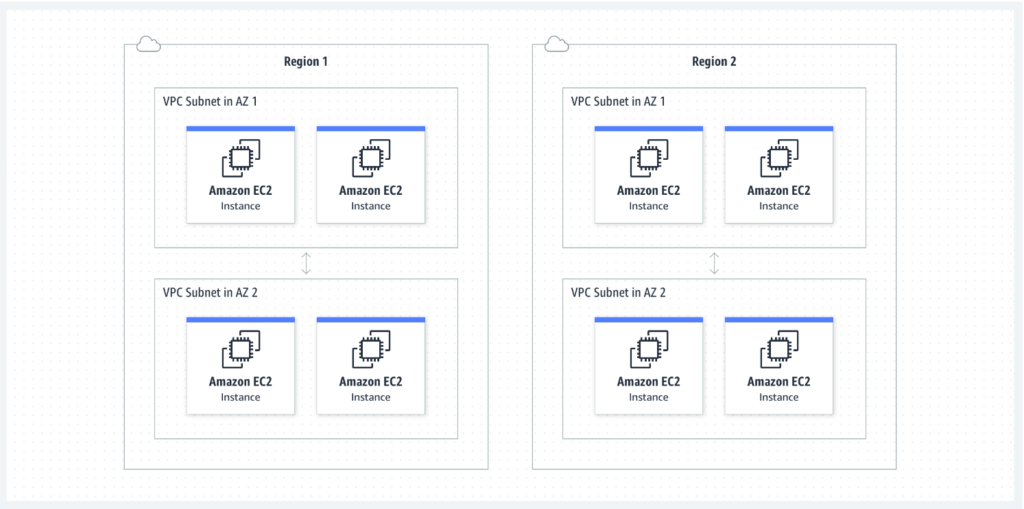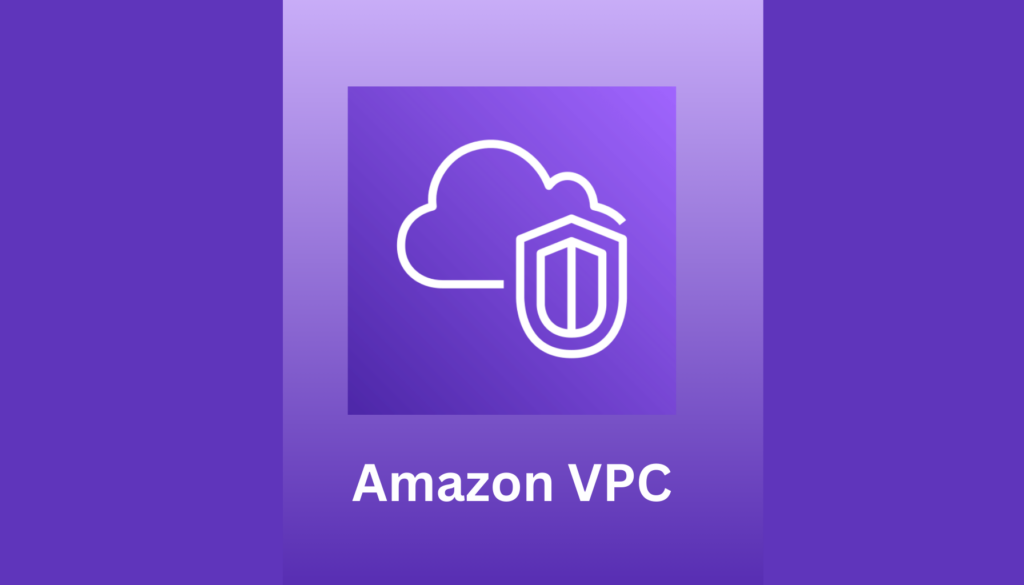What is Amazon VPC?
Amazon VPC (Virtual Private Cloud) is a service that allows users to create a private, isolated section of AWS cloud. Within this environment, you can launch AWS resources, such as virtual servers, in a network you define. This service provides flexibility in terms of network design, allowing for selecting IP address ranges, creating subnets, and configuring route tables and network gateways.
VCP enables a seamless extension of your corporate data center to the cloud, bridging the gap via a hardware VPN connection, thus integrating on-premises IT infrastructure with cloud-based resources.

Source: Amazon VPC
Amazon VPC Core Features
The main advantage of using Amazon VPC is the logical isolation of virtual networks. This isolation grants you control over the incoming and outgoing traffic of that virtual network. Here are some of the key features of VPC.
- Subnets and IP Addressing: Subnets are a core feature of Amazon VPC, enabling you to segment your VPC into multiple networks. This segmentation can be used for public or private facing resources, optimizing network performance and security. Each subnet has a customizable IP address range, giving you the flexibility to design a network that best suits your needs.
- Enhanced Security Mechanism: Security within a VPC is managed using Security Groups and Network Access Control Lists (ACLs). Security Groups act as virtual firewalls at the instance level, controlling both inbound and outbound traffic at the interface level. Network ACLs provide an additional layer of security, acting as a firewall for controlling traffic at the subnet level, thus providing a double layer of security.
- Route Tables and Internet Gateways: Route tables in Amazon VPC define the paths for network traffic, controlling how data moves within the VPC, between subnets, and out to the internet. Each subnet in a VPC is associated with a route table, which dictates the flow of traffic. Internet Gateways are critical for allowing resources within your VPC to access the internet and vice versa, acting as a gateway for inbound and outbound traffic.
- VPC Peering and VPN Connections: VPC Peering allows for the connection of two VPCs, enabling resources in different VPCs to communicate as if they are in the same network. This is essential for collaborative projects or multi-departmental organizations operating in separate VPCs. VPN Connections, on the other hand, provide secure communication between your VPC and an external network, like your corporate data center, ensuring encrypted and private data transfers.
- Elastic IP Addresses and Elastic Network Interfaces: Elastic IP Addresses in Amazon VPC are static IPv4 addresses designed for dynamic cloud computing. These addresses allow for reliable, persistent public IP addressing for AWS resources. Elastic Network Interfaces (ENIs) are another key feature, offering virtual network interfaces that can be attached to instances in your VPC, providing both flexibility and security in network management.
Amazon VPC Pricing Overview
Creating Amazon Virtual Private Cloud (VPC) in itself is free. Users can create a VPC and its fundamental components, such as subnets, route tables, and network ACLs, without any cost. However, users are required to pay for any optional VPC capabilities with usage-baed charges. These include services that enhance control, connectivity, monitoring, and security within the VPC.
NAT Gateway Pricing and Data Processing Charges
Choosing to create a NAT gateway in a VPC will lead to hourly charges based on “NAT Gateway-hour”. In addition to this, there are data processing fees applied for each gigabyte of data that passes through the NAT gateway. It’s important to note that these charges vary depending on the AWS region in which your VPC is located.
NAT Gateway Pricing for the Region “US East (N. Virginia)”
- $0.045 per NAT gateway ($/hour)
- $0.045 per GB data processed
- Data Transfer Charge may apply as per standard EC2 Data Transfer rate
Amazon VPC IP Address Manager (IPAM)
The IPAM comes with two tiers. The “IPAM Free Tier” allows users to access core IPAM features at no cost, but this is limited to a single region or account. For comprehensive access, including multi-region and multi-account capabilities, IPAM charges an hourly rate of $0.00027 for each active IP address managed within the IPAM system.

Traffic Mirroring Pricing
Activating traffic mirroring on Amazon EC2 instance Elastic Network Interfaces (ENIs) requires the user to pay a charge of $0.015 per hour for each Elastic Network Interface. It’s important to note that this hourly rate varies based on the specific AWS region where the service is utilized.
Reachability Analyzer Pricing
Every time you use VPC Reachability Analyzer to check the connectivity between instances, it costs $0.10 per analysis. For example, if you analyze the connection between two instances ten times, the total charge would be $1.
Network Access Analyzer Pricing
With Network Access Analyzer, you pay based on the number of EC2 Instance ENIs analyzed during each network assessment. The rate is set at $0.002 per ENI. So, if you run 5 network assessments, each analyzing 1000 ENIs, your total cost would be $10.
You should note that all this pricing is variable to the region you choose to use.
How to do Cost Optimizations for Amazon VPC
For effective cost optimizations, it’s important to understand the pricing structure and your project requirements. Here are some key points you should consider for cost optimizations.
1. Effective VPC Design Strategies
Cost optimization in VPC mostly depends on its design and architecture. Using efficient public and private subnets, along with strategic placement of recourses, can significantly reduce costs.
2. Monitoring and Managing Network Costs
Regular monitoring of network usage and costs is essential for cost saving. Tools like AWS Cost Explorer and CloudWatch offer valuable insights into usage patterns, helping identify areas for cost reduction, such as data transfer optimization and right-sizing resources.
3. Utilize AWS Budgets and Cost Alarms
You can set up budgets and configure alarms to receive alerts when your usage surpasses your predetermined budget limits, effectively preventing unforeseen expenses.
4. Leveraging Benefits from AWS Partners
Choosing an AWS partner like Elite Cloud for your payment processing can offer additional discounts. This is over and above the service level discounts already provided, enhancing the overall cost-effectiveness of your AWS services
Conclusion
Designing a cost-efficient VPC on AWS Cloud requires a deep understanding of the service’s features and pricing structure. That ultimately helps in achieving both performance and cost savings.
Ready to elevate your AWS strategy?
[Reach out] for specialized guidance to ensure your setup is both cost-effective and high-performing.

